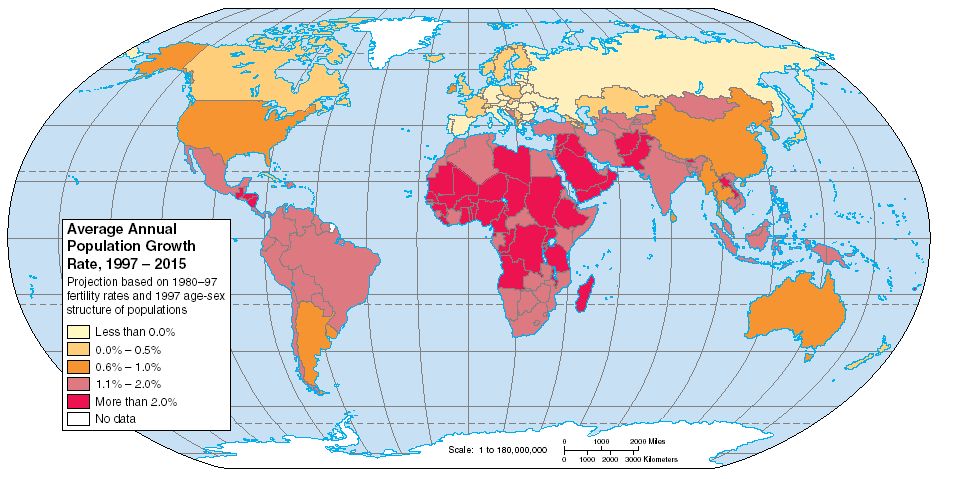7 Billion and Counting: A Look at Human Population

The number of humans on the planet has risen exceedingly in the past 200 years. In the 1810’s the population of the world reached its first billion. According to the Population Council, planet earth welcomed its 7th billion human on the 31stof October 2011. We live on a planet that, in very recent history, has experienced the most rapid population growth of its existence.
It took 50,000 years for the human population to climb from inconsequential numbers to 1 billion. The 2 billion mark was achieved in merely 100 years. To reach 3 billion, took only 30 more years. To reach 4 billion, just 15 years. One might ask, what are the factors behind such drastic rate increases in population growth?
According to The Upper Midwest Aerospace Consortium (UMAC), the leading contributors of the unparalleled recent escalation in human population include amplification of food production, immunizations, availability of antibiotics, and clean water. These factors, yielding vast decreases to infant mortality rates along with increase in life expectancy of average humans, caused the population surge.
Currently, China holds rank for the highest population level in the world with over 1.3 billion people. This accounts for 19.16% of overall world population, making one in every five people on the planet a resident of China. India comes in as a close second, with 1.2 billion, accounting for 17.31% of the world’s population. In third place, is the United States, who, according to the official population clock of the U.S. Census Bureau has a population of approx. 313,000,000 people, with a net gain of one person every 15 seconds.
Today, it is low-income countries that have the highest birth rates. Poor health conditions and lack of education for women are two major causal factors of this statistic.
According to the World Bank’s study on global population, “Parents choose to have smaller families when health conditions improve because they no longer have to fear that many of their babies might die.” Furthermore, they state, “Women with basic education tend to produce healthier children and smaller families.”
According to the 2006 survey of the U.S. census bureau titled Fertility of American Women, education is a significant indicator of financial success, and the two factors are linked in regards to birth rates. The survey found that, “Women 15 to 44 years old with at least a bachelor’s degree completed their childbearing years with fewer children on average than those who had not completed high school.” In addition, “Women who did not complete high school had the highest fertility rates between the ages of 20 to 24 years and 25 to 29 years (199 and 146 births per 1,000 women).”
The UMAC explains that in order for the planet to maintain a stable population size, a total fertility rate (TFR) of 2.1 children per woman is required. Currently the worldwide average TFR is 2.9. China maintains a TFR of 1.8. Spain holds the lowest TFR in the world, at 1.15, and Western Europe altogether has a TFR of less than 1.5. Though these rates are low, they will have to remain low for a generation or longer for population size to decrease or remain constant. By contrast the TFR of Eastern Africa is 4.55, and is not expected to drop to 2.1 until 2045.
If current trends persist, the population of our planet will continue to grow by 1 billion people every 13 to 14 years, with a projected 9.3 billion by 2050.
According to the World Bank, “Rapid growth of the developing countries’ population, particularly in the next 50 years, poses many economic, social, and environmental challenges, not only for these countries but also for the entire global community.”
The stabilizing of the world’s human population is imperative to ensure quality of life for future generations, not to mention a major factor for international public policy making. Keep a look out for future IVN reports on the effects of population and demographic changes, as we delve deeper into this subject.





